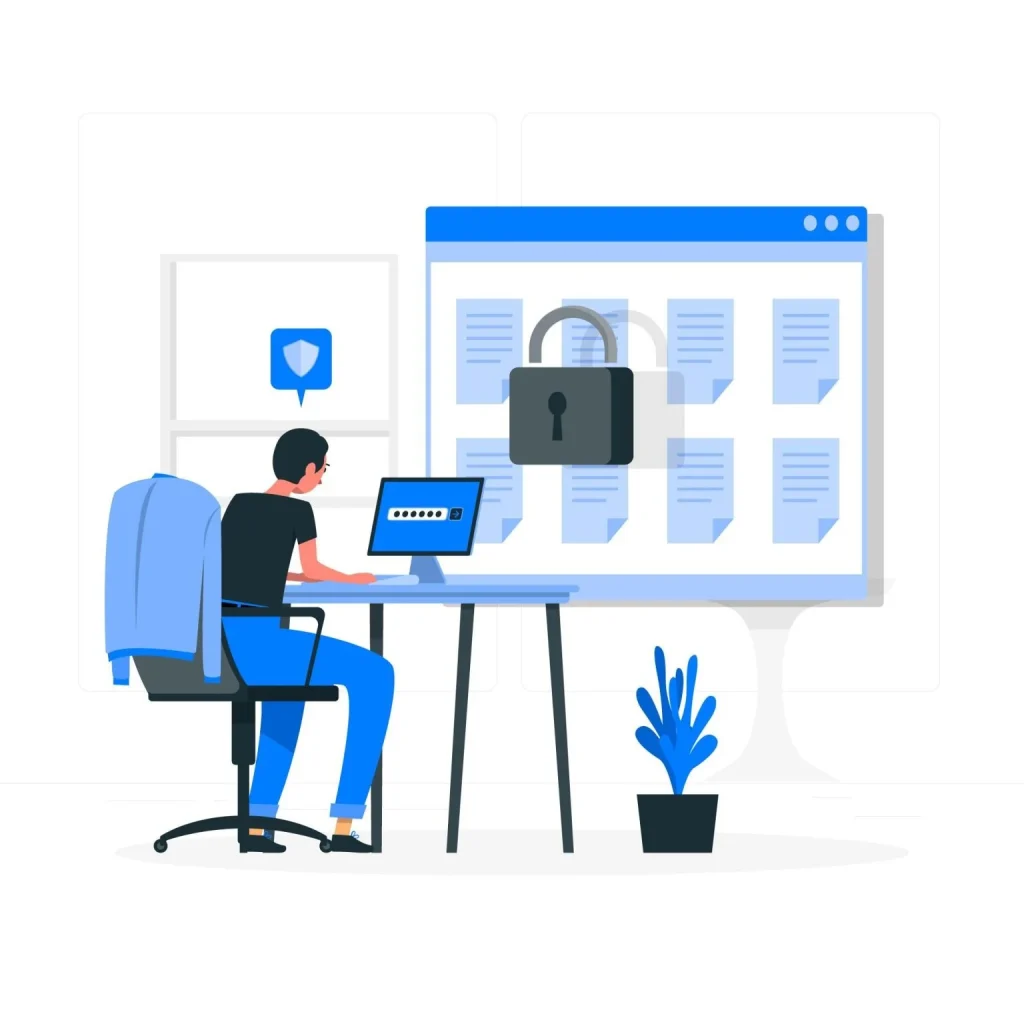Fortify your website security
In today’s digital landscape, ensuring the security of your website is critical. Because cyber risks are continually evolving, it is critical for website owners to adopt preventive measures. In this blog, we will go through nine crucial actions to improve website security, protecting both your business and your visitors.
1. Implement HTTPS and an SSL Certificate
The first step in safeguarding your website is to implement HTTPS (Hypertext Transfer Protocol Secure) and secure an SSL (Secure Sockets Layer) certificate. This encrypts data sent between your website and its visitors, making it much more difficult for attackers to intercept or manipulate important information like login credentials or financial data.
2. Regularly Update Software and Plugins
Hackers may be able to exploit weaknesses in outdated plugins and applications. The content management system (CMS), themes, and website plugins must all be kept up to date. Check for updates frequently, then implement them right away. Additionally, think about uninstalling any inactive plugins or themes since they can still be a website security risk.
3. Choose a Secure Web Hosting Provider
Choosing a trustworthy web hosting service is critical for running a secure website. Check that the supplier follows best practices, such as patching servers regularly, checking for security breaches, and performing backups. Choose a supplier that also provides advanced security features such as firewalls, intrusion detection systems (IDS), and distributed denial-of-service (DDoS) protection to protect against common cyber attacks.

4. Ensure PCI Compliance for eCommerce Websites
If you operate an eCommerce website that accepts online payments, you must adhere to the Payment Card Industry Data Security Standard (PCI DSS). PCI compliance aids in protecting sensitive client data, such as credit card information. It entails creating secure payment gateways, encrypting data, searching for vulnerabilities regularly, and maintaining a strong security posture.
5. Encourage the Use of Strong Passwords
Weak passwords are a popular entrance point for cybercriminals. Encourage all users of your website, including administrators, to use strong, unique passwords. Implement password complexity criteria and provide password creation guidance. Consider adopting multi-factor authentication (MFA) to offer an additional layer of protection by forcing users to provide additional verification, such as a code texted to their mobile device, along with their password.
6. Control User Access and Permissions
Limiting user access and assigning proper rights can prevent unwanted website operations. Review user accounts on a regular basis and delete any unnecessary rights. Only give administrative access to trusted personnel who need it. Implement user roles and privileges based on job duties.
7. Install Scanning and Monitoring Tools
Utilizing scanning and monitoring technologies makes it easier to spot and quickly fix security problems. Use vulnerability scanners to look for flaws in the code, server configurations, or server settings of your website. Monitor network traffic and look for unusual activities by implementing intrusion detection systems (IDS) or intrusion prevention systems (IPS). These tools provide real-time alerts, allowing you to take immediate action against potential threats.
8. Consider Adding a Website Firewall
Between your website and prospective attackers, a website firewall serves as a protective barrier. It restricts unauthorized access attempts, filters out harmful traffic, and detects and mitigates typical web-based attacks including SQL injection and cross-site scripting (XSS). Consider using a web application firewall (WAF) to add an extra layer of defense to your website, reducing the risk of successful attacks.
9. Strengthen Network Security Measures
In addition to securing your website, it is critical to increase overall network security. Implement secure protocols for remote access, set up a virtual private network (VPN) for secure communication, and update the firmware on your network equipment on a regular basis. To prevent illegal access, use strong encryption techniques and safeguard your Wi-Fi network with a unique, strong password.
Implementing these nine crucial actions will significantly enhance the security of your website. However, it’s important to note that this is not an exhaustive list of all security measures. Website security is an ongoing process that requires continuous vigilance and adaptation to evolving threats. By adopting these best practices, such as implementing HTTPS, keeping software up to date, choosing a secure web host, and following other measures discussed in this blog post, you can establish a strong foundation for website security. Remember to stay informed about the latest security trends and technologies to ensure your website remains resilient against emerging cyber risks. Safeguard your business and provide peace of mind to your visitors by prioritizing website security.
